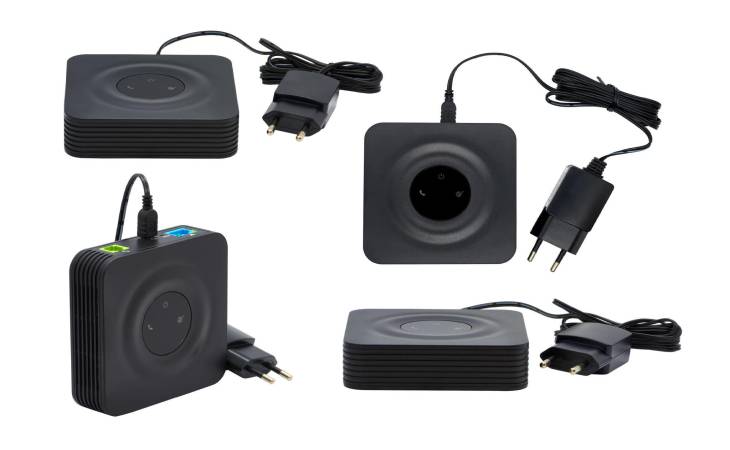Table of Contents
Introduction
An Analog Telephone Adapter, aka ATA, is a device that allows old-style analog telephones to connect to Voice over Internet Protocol (VoIP) networks. Furthermore, it bridges the gap between the analog phone and the digital VoIP network, enabling users in making & receiving phone calls over the internet.
What does an Analog Telephone Adapter do?
An Analog Telephone Adapter simplifies the integration of traditional analog telephones with Voice over Internet Protocol (VoIP) networks. In addition, to functioning as a bridge between analog phones and digital communication systems, the adapter converts analog voice signals into digital data suitable for transmission over the internet.
Typically it connects to the analog phone through an RJ-11 jack and interfaces with the internet via an Ethernet port. ATAs allow users to make and receive VoIP calls using their existing analog phones, conserving their investment in traditional telephony infrastructure.
Through user-friendly configurations, ATAs link to VoIP service providers, translating SIP protocols and empowering features such as caller ID, call waiting, and voicemail on analog devices. Consequently, this economical solution is ideal for users seeking the advantages of VoIP without ending their familiar analog phone hardware.
Types of Analog Telephone Adapter:
Analog Telephone Adapters come in different types and configurations, catering to user needs and scenarios. Here are some common types:
- Single-Port ATAs: Designed for connecting a single analog telephone to a VoIP network.
- Multi-Port ATAs: Support multiple analog phones or fax machines, allowing users to connect several devices to the VoIP network.
- Wi-Fi ATAs: Enable wireless connectivity, allowing users to connect analog phones to a VoIP network without needing physical cables.
- Softphone ATAs: Software applications that emulate the functionality of an ATA, allowing users to use their computer as a virtual phone adapter for VoIP calls.
- Portable ATAs: Compact devices that allow users to take their VoIP service and connected analog phone on the go, useful for frequent travelers.
Benefits of Analog Telephone Adapter:
- Cost-Effective Transition to VoIP:
An ATA offers a cost-effective solution for individuals and businesses considering switching from traditional analog phone services to Voice over Internet Protocol (VoIP).
- Preservation of Existing Infrastructure:
These adapters enable users to preserve their investment in analog telephony infrastructure. By connecting analog phones to the ATA, users can pull the benefits of VoIP without needing extensive hardware upgrades. Such enables the migration to digital communication more accessible and economical.
- User-Friendly Integration:
Their design intends for ease of use and typically features user-friendly interfaces for configuration.
- Retainment of Familiar Telephony Features:
These adapters allow users to retain familiar telephony features like caller ID, call waiting, and voicemail. However, by integrating these features with the existing analog phones, users can enjoy the remunerations of VoIP without losing the functionality they are accustomed to.
- Flexibility and Mobility:
Moreover, some ATAs, especially those with wireless capabilities, offer flexibility and mobility. Users can connect their analog phones to Wi-Fi-enabled ATAs, making VoIP calls without being tethered to a specific location.
Analog Telephone Adapter – Things to Consider:
- Ensure your chosen ATA is compatible with your VoIP provider’s service.
- Pick an adapter with enough ports as per your needs.
- Consider additional features like call waiting, voicemail, and caller ID.
- Saerch for ATAs offering clear and reliable voice quality.
Conclusion:
In conclusion, Analog Telephone Adapters) serve as vital connectors between traditional analog telephones and the modern era of Voice over Internet Protocol (VoIP). Offering a cost-effective solution, ATAs facilitate users’ seamless transition to digital communication without extensive hardware replacements.
Additionally, the preservation of existing infrastructure, user-friendly integration, and the retention of familiar telephony features make ATAs an accessible and practical choice for individuals and businesses equally.
Whether through wired or wireless connections, ATAs provide flexibility and mobility, allowing users to make VoIP calls using their trusted analog phones. As technology progresses, adapters play a dynamic role in bridging the gap between telecommunication’s past and future.

